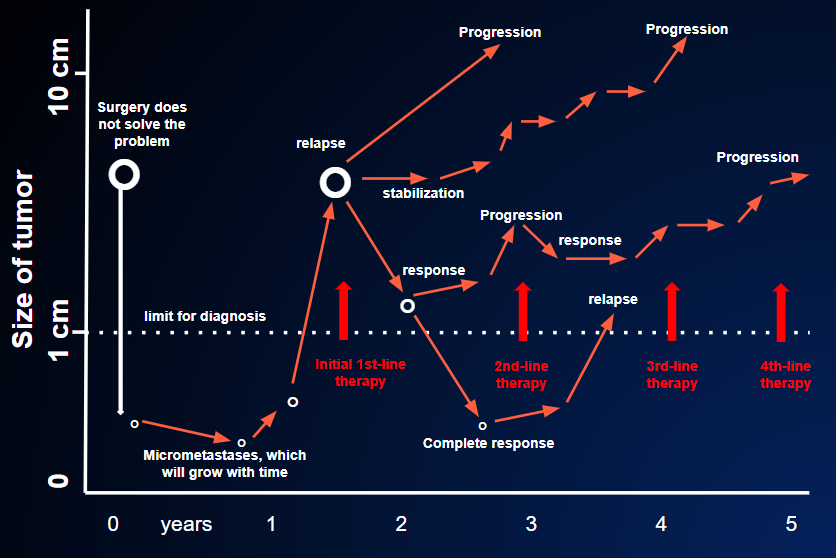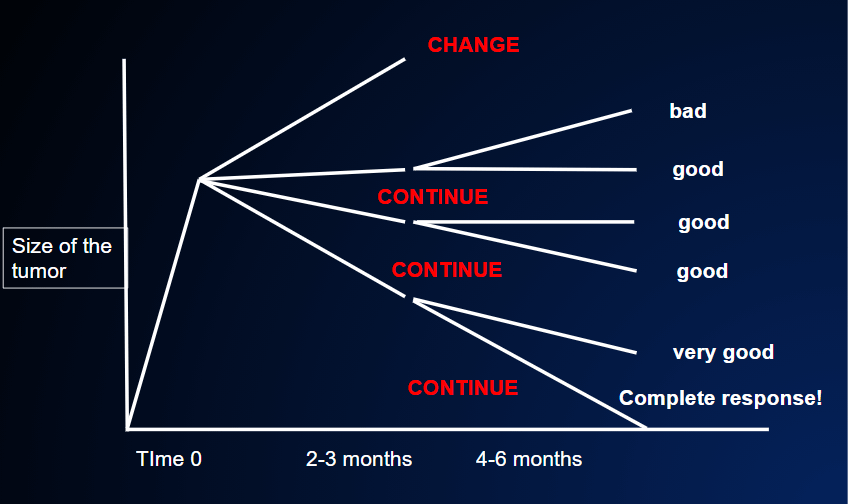In cases of metastatic cancer or inoperable tumors, the objectives of medical treatment (chemotherapy, hormone therapy, immunotherapy, etc.) are to fight the disease in the hope of reducing it, stabilizing it, making it less aggressive and, in some cases, even “eliminating” it completely.
Complete elimination of the disease is quite rare (1-15%)and depends very much on the type of tumor. In technical language, this result is called complete response, which means that no sign of the disease can be found (no symptoms, CT is normal, tumor markers are normal), FIGURES 17, 19, 20. This is the best and most fortunate result of anti-cancer therapy.



Unfortunately, however, in the vast majority of cases, some resistant tumor cells survive despite the complete response. After some time, these surviving cells begin to grow, and the disease becomes visible once again (relapse), FIGURE 20.
In a few cases, however, the evolution of the disease may take a much more favorable turn; indeed, some patients who achieve a complete response no longer relapse. Against all “oncological dogma”, these patients will have been cured (WE CAN FINALLY SAY WE ARE CURED) even though their cancer was metastatic before treatment began.
As mentioned above, a complete response is a fairly rare event (1-15% of cases). When it does happen, it is cause for enthusiastic celebration, as it rekindles the patient’s hopes; it marks a return to life without cancer.
If chemotherapy achieves a complete response, the same therapy is generally continued for another 2-3 months, in order to consolidate the result. After that, it is discontinued, as carrying on further would only increase the toxic effect without yielding any further benefit. However, if the therapy that induced the complete response was a hormone therapy, an immunotherapy or a molecular targeted therapy, this therapy is usually continued for long periods (several months/years), as the toxic effects of these drugs are generally much milder than those of chemotherapy.
Achieving a complete response is always the ultimate objective of anti-cancer therapy. In some tumors, the probability of response – i.e., controlling the growth and reducing the size of the tumor – is 70%, and in 10%-15% of these patients the response is complete. In other types of tumor, only 30-40% of patients respond to treatment, and fewer than 3-4% have a complete response. Nevertheless, in all patients and in all therapies, a complete response still remains the principal target.
Indeed, if this hope did not exist, it would be very difficult to accept treatments for the advanced stage of cancer. And it is those cases of complete response which strengthen the determination and hope of all the other patients.
